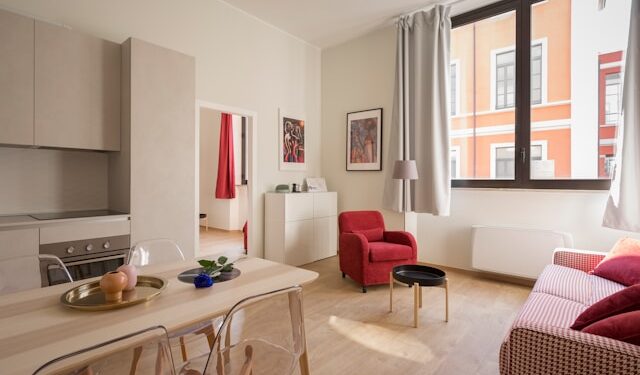Choosing the perfect paint color can transform a space, set the mood, and enhance the overall aesthetic of your home. Whether you’re giving your walls a fresh coat or planning a full redesign, selecting the right shade is crucial. This guide will help you understand how to choose the right paint color based on lighting, room size, and personal preferences.
Factors to Consider When Choosing a Paint Color
Before picking up a paintbrush, consider these essential factors to ensure the best results.
1. Lighting Matters
Natural and artificial lighting can drastically affect how a paint color appears in a room. A shade that looks warm and inviting in daylight may appear dull under artificial light. To get an accurate idea of a color, test it at different times of the day.
- North-facing rooms tend to have cooler light, making warm tones ideal.
- South-facing rooms receive abundant light, allowing both warm and cool colors to shine.
- East-facing rooms get bright morning light, making soft pastels a great choice.
- West-facing rooms have warm evening light, enhancing earthy and deep tones.
2. Room Size and Perception
Paint color can influence how big or small a room appears.
- Light shades make small rooms feel more spacious and airy.
- Dark tones create a cozy, intimate atmosphere in large spaces.
- Accent walls can add depth and character without overwhelming a space.
3. Mood and Function of the Room
Different colors evoke different emotions, so it’s essential to align your color choice with the purpose of the room.
- Relaxing shades (soft blues, greens, neutrals) are ideal for bedrooms.
- Energizing colors (reds, oranges, yellows) work well in kitchens and dining rooms.
- Calm and refreshing hues (whites, beiges, pastels) are great for bathrooms.
- Focus-boosting shades (muted blues, greens, and grays) are recommended for home offices.
4. Matching with Existing Décor
Your chosen paint should complement the furniture, flooring, and accessories in the space. Before finalizing a shade, consider:
- The undertones in your furniture and décor
- Whether you want a harmonious or contrasting color scheme
- How the color will flow with adjacent rooms
Best Paint Colors for Every Room
Here’s a guide to the best paint colors for each space in your home.
Living Room
Warm neutrals like beige, taupe, or light gray create a welcoming atmosphere. If you prefer a bolder look, deep blues or forest greens add sophistication.
Bedroom
Soft blues, muted greens, and warm neutrals promote relaxation and restful sleep. Avoid overly bright or stimulating colors.
Kitchen & Dining Room
White, cream, and soft yellows make kitchens feel fresh and clean. If you love bold tones, navy blue or deep green cabinets can make a striking statement.
Bathroom
Cool shades like seafoam green, light gray, and powder blue create a spa-like environment. White or off-white shades enhance a clean, modern feel.
Home Office
Soft blues, greens, and grays help with concentration and productivity. If you want a creative space, consider deep teals or muted mustards.
Children’s Room & Nursery
Soft pastels, playful yellows, and nature-inspired greens create a fun and adaptable environment that grows with the child.
Popular Paint Color Trends
While classic neutrals remain timeless, some trending shades can add a modern touch to your home.
- Earthy tones like terracotta, sage green, and deep browns are making a comeback.
- Soft pastels such as blush pink and powder blue offer a subtle yet stylish update.
- Bold accent walls in rich jewel tones add personality without overwhelming a space.
Testing and Finalizing Your Paint Choice
Before committing to a full room color, follow these tips:
- Use paint swatches on different walls to see how the color appears in various lighting conditions.
- Consider undertones to ensure the shade complements your décor.
- Test different finishes like matte, satin, or gloss, depending on the room’s function.
Common Mistakes to Avoid
- Choosing a color based on a small paint chip without testing on your walls.
- Ignoring how lighting affects color perception.
- Overlooking undertones that may clash with furniture or flooring.
Conclusion
Understanding how to choose the right paint color can make all the difference in creating a home that feels inviting and stylish. Consider lighting, room size, and mood when selecting shades, and don’t be afraid to experiment with samples before making a final decision. Whether you’re opting for timeless neutrals or embracing bold trends, the perfect color is out there for every space.





